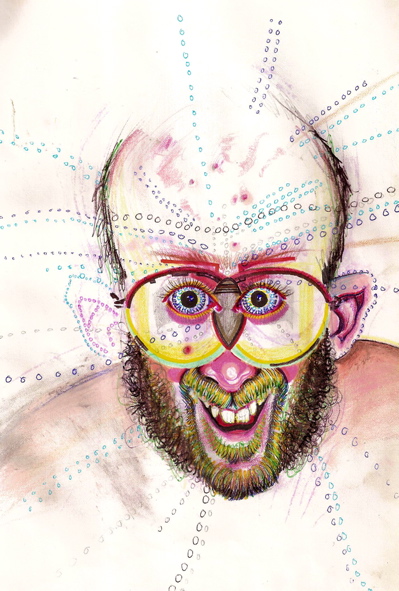A Foray into Self-Perception: Altering Self-Image through Drugs
Before reading this post, I want you to take a look at the website of Bryan Lewis Saunders, specifically the portion that describes his escapade through drugs and self-image. It can be found at http://www.bryanlewissaunders.org/drugs/.
As a brief summary, Saunders took one drug a day for several weeks straight, and drew a self-portrait during the experience of each. Eventually, he changed to more sporadic use due to exhaustion and brain damage issues, but he did continue for quite a while. Saunders ranges the gamut from commonly known drugs such as Adderal, bath salts, and cocaine to more obscure Risperdol and Klonopin. The approach was clearly unscientific, it does delve into some interesting questions concerning our self-image, at least once you go past the initial, “this guy is crazy” response. Although I certainly won’t delve into all of them, I think it’s important to sometimes take a moment and ask them.
First of all, it’s interesting to see how much our self-perception can be altered by something so seemingly trivial as a drug. We consider our image to be an integral part of us, yet it is easily changed. For those who study neuroscience, this is probably unsurprising, as we know that drugs change the chemistry of our body and brain, and are thus likely to alter self-image. However, the extent is quite amazing, if Saunder’s pseudo-experiment is any indication.
The fact that our perception can range from something like the Ambien image (http://media.bryanlewissaunders.org/artwork/ambien.jpg) to that of Dilaudid (http://i95.photobucket.com/albums/l136/mrbrainsander/4mgDilaudid.jpg) indicates that our self-perception is easily altered, not just by ourselves, but also by our environment. Although the drugs are just one part of the environment, it’s important to think about how other parts of our surroundings affect how we view ourselves. Things such as our friends, where we live, the clothes you wear, and even something as trivial as the weather can affect your self-image (see Seasonal Affective Disorder, also known rather fittingly as SAD).
In addition, it’s amazing how some drug use appears not to alter self-perception directly, but rather through perception. As an example, let’s take a look at Saunders’s use of psilocybin mushrooms, more commonly known as shrooms. Although there is definitely a change of emotion depicted, I would attribute a majority of the drawing’s aesthetic to the changes in perception caused by the drug. Bright colours and exaggerated dimensions are both consistent with the expected changes associated with shrooms.
However, that is not to say that Saunders’s approach does not have its issues. Obviously, it is in no way a reliable scientific experiment, nor can it ever be reproduced. It would have been preferable that Saunders focused on drawing a self-portrait every time, although this may have been the case anyway, and this is simply what happened in his state. However, the more important question is different. I mentioned previously how the shrooms image matched up well with the expected result. However, how much did that expected result influence the image? In other words, there may be a correlation, but which factor is the cause, and which is the result?
Nevertheless, Saunders’s exploration does have its merits. Not only does it explore the effects of drugs on perception, but it forces us to ask ourselves why we view ourselves the way we do, and what we can do about our environment to change that.
-Tom Meeus

November 12, 2013
Interesting art gallery. The self-portraits give you a feel for how the different pharmacological effects alter his perception. It creates a subjective model of what the different “mental filters” may be like.